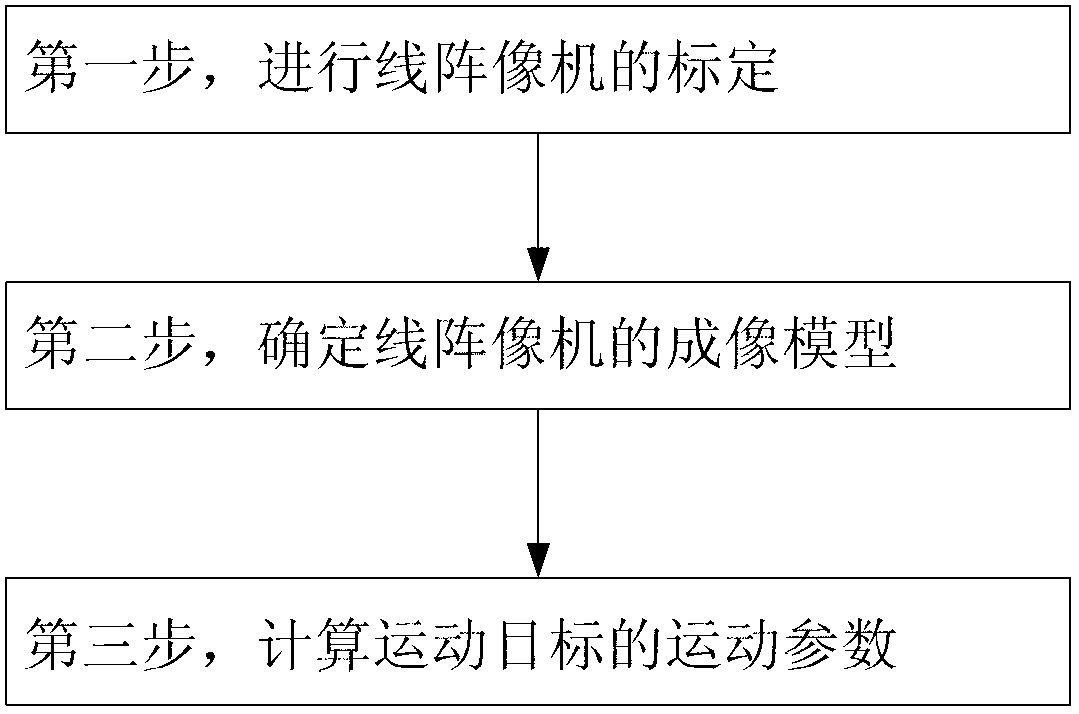Method for measuring motion parameters of target in linear array image
A technology of motion parameters and linear array images, applied in the fields of image processing and photogrammetry, can solve problems such as high algorithm requirements, difficult to guarantee accuracy, and large amount of data, and achieve the effect of clear target outline, accurate measurement, and high resolution
- Summary
- Abstract
- Description
- Claims
- Application Information
AI Technical Summary
Problems solved by technology
Method used
Image
Examples
Embodiment Construction
[0017] The present invention will be described in detail below in conjunction with the accompanying drawings.
[0018] The first step is to calibrate the line scan camera.
[0019] What adopted in the present invention is the line array camera as the tool of photogrammetry. The imaging model of the line-scan camera includes the inner and outer orientation elements of the line-scan camera, and these azimuth elements are obtained through the calibration of the line-scan camera. For the calibration of the line-scan camera and the description of the imaging model, see: C.A.Luna, M.Mazo, et al, Calibration of Line-Scan Cameras, IEEE TRANSACTIONS ON INSTRUMENTATION AND MEASUREMENT, 2010, 59, (8), pp.2185- 2190.
[0020] In order to describe the time-space relationship of line scan camera imaging, the following coordinate system is defined (as attached figure 2 shown):
[0021] Measurement coordinate system O-XYZ: In the measurement of the actual moving target, select any point ...
PUM
 Login to View More
Login to View More Abstract
Description
Claims
Application Information
 Login to View More
Login to View More - R&D
- Intellectual Property
- Life Sciences
- Materials
- Tech Scout
- Unparalleled Data Quality
- Higher Quality Content
- 60% Fewer Hallucinations
Browse by: Latest US Patents, China's latest patents, Technical Efficacy Thesaurus, Application Domain, Technology Topic, Popular Technical Reports.
© 2025 PatSnap. All rights reserved.Legal|Privacy policy|Modern Slavery Act Transparency Statement|Sitemap|About US| Contact US: help@patsnap.com



